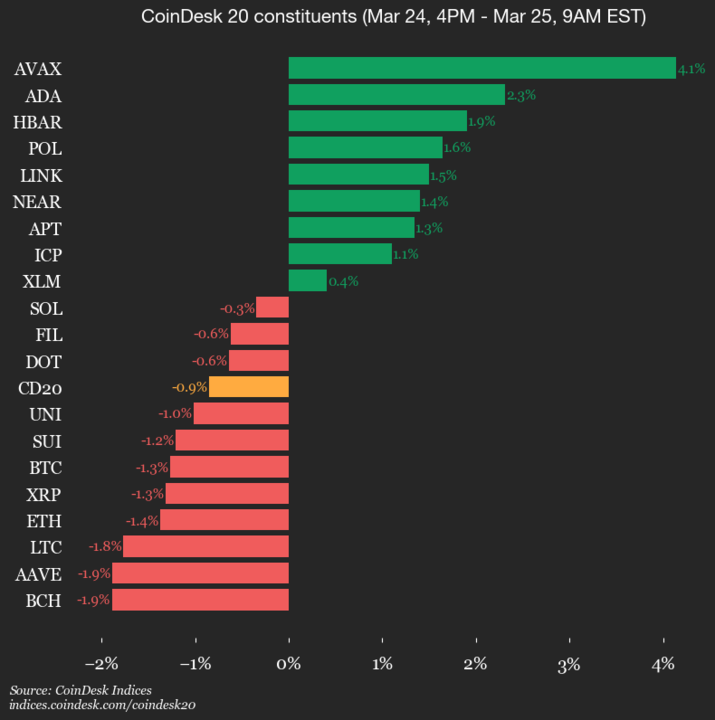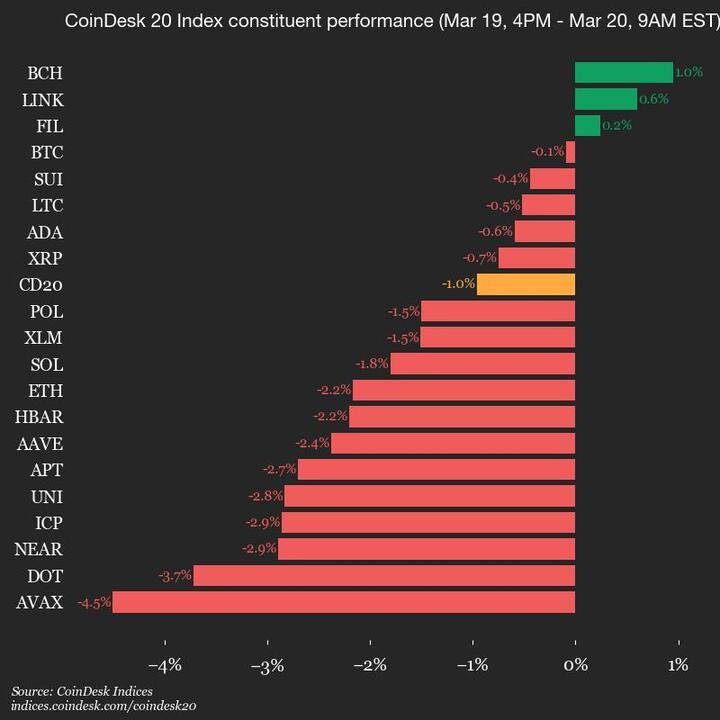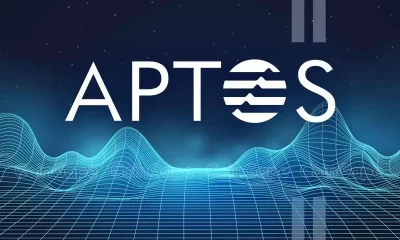CoinDesk Indices
Building Bridges to the Mainstream
Published
3 months agoon
By
admin
In today’s issue, Leo Mindyuk from MLTech provides a crypto outlook for 2025 and highlights key factors that could drive the adoption of these assets.
Then, Miguel Kudry from L1 Advisors shares his insights on the topic in Ask and Expert.
You’re reading Crypto for Advisors, CoinDesk’s weekly newsletter that unpacks digital assets for financial advisors. Subscribe here to get it every Thursday.
2025 Outlook for Crypto Adoption: Building Bridges to the Mainstream
The crypto industry is entering 2025 with a renewed sense of purpose. Over the past year, the sector has witnessed key developments that signal crypto’s increasing integration into traditional finance (TradFi) and broader adoption of crypto assets, especially bitcoin. However, the road ahead will test the resilience of this growing ecosystem. As we assess the outlook for 2025, several factors emerge as critical to shaping the adoption trajectory: regulatory clarity, institutional participation, and technological innovation.
1. Regulatory Clarity: Turning Uncertainty Into Institutional Guidelines
As I’ve briefly discussed on my CoinDesk podcast about election night results and the price action around it, regulatory clarity is emerging as a pivotal factor for crypto adoption. The market has already started pricing in the expectation that newly elected officials will bring long-awaited structure to the digital asset ecosystem. We will see some of those expectations starting to play out this year. Key areas where we are likely to see more clarity include:
a) Definition and classification of digital assets: The U.S. is expected to refine how digital assets are classified – whether as securities, commodities, or some combination. This clarity will directly impact how tokens are issued, traded, regulated, and taxed.
b) Stablecoins: These are likely to be a major focus for regulators due to their transformative real-world use cases and potential impact on financial stability.
c) Taxation of crypto transactions: Recent changes have already been made, and we will likely see clearer tax reporting requirements for digital assets, various associated activities, and various industry players.
Additional topics such as tokenization—including real-world assets—custodial and non-custodial wallets, regulated trading venues, decentralized finance (DeFi), anti-money laundering (AML) and know your customer (KYC) compliance, and consumer protections will also be actively discussed and potentially acted upon.

2. Institutional Participation: ETFs as a Catalyst
In 2024, crypto ETFs experienced explosive growth, with billions in net inflows and notable launches. With new products, crypto ETFs now represent a rapidly expanding financial market segment, attracting significant investor interest and outperforming traditional funds. We will likely see a variety of adjacent products.
For 2025, growing inflows and high volumes in BTC and ETH ETFs will likely continue to validate crypto as an asset class and streamline access for retail and institutional investors. This will open the path for other single-asset ETFs, multi-asset ETFs, and various adjacent ETFs (e.g., leveraged, inverse, market-timing, volatility). If regulatory clarity progresses fast enough, we may see the U.S.’s first crypto yield-generating ETFs (e.g., staking). These products could bring additional investor interest to the asset class and increase inflows into passive and active investment products.
3. Technological Innovation: The Convergence of Blockchain Scalability and AI
Technological advancements in 2025 will be driven by Layer-2 blockchain scalability and AI integration. Rollups, zero-knowledge proofs, and interoperability will enhance transaction efficiency and user experience for decentralized applications (dApps) and DeFi. Simultaneously, AI agents operating on decentralized networks will solve and optimize a variety of tasks and interact with users and each other. This synergy simplifies Web3 interactions and ensures secure, transparent execution of AI decisions on blockchain. Together, these innovations will lower barriers to entry, attract developers and users, and accelerate mainstream adoption, making 2025 a pivotal year for blockchain and AI convergence.
Summary
The outlook for crypto adoption in 2025 is overwhelmingly positive, but not without challenges. Regulatory clarity, institutional participation, and technological innovation will be the pillars of growth. The question isn’t whether crypto will gain mainstream acceptance—it’s how fast and in what form. As we approach this next phase, those who adapt to the evolving landscape will lead the charge in shaping the future.
Ask an Expert
Q. What were the most impactful developments in the crypto market over the past year, and how have they shaped crypto adoption?
The most significant development in crypto last year was the political shift, with President-elect Donald Trump making crypto a key part of his platform. Markets are only beginning to price in the impact of the Executive and Legislative branches, along with financial regulators, that not only refrained from fighting the crypto industry but also encouraged crypto innovation within the United States. Beyond bitcoin adoption and the potential establishment of a national strategic bitcoin reserve, the broader implications for financial markets are still unclear to many market participants. Some of the world’s largest financial institutions that were previously on the sidelines are now actively developing their crypto strategy in response to the new pro-crypto administration.
Q. How is the evolving regulatory landscape likely to impact crypto markets and institutional involvement in 2025?
The SEC’s regulation-by-enforcement approach has had a far-reaching impact on the crypto markets. A shift to a neutral – or even positive – stance means financial professionals and institutions will need to actively explore how to better serve their customers who are already engaged with crypto, particularly given its decisive role in the election. Additionally, they will need to adapt their offerings to remain competitive in a world where financial markets and assets increasingly operate on crypto rails. Financial advisors, in particular, now have more opportunities to serve their clients by incorporating crypto allocations and existing crypto portfolios into comprehensive financial planning and strategy.
Q. Given the macroeconomic climate, how should financial professionals think about integrating crypto into broader investment strategies in 2025?
The year 2025 will mark a pivotal shift for crypto, transitioning from merely being an asset class to becoming the infrastructure that underpins a growing portion of all asset classes. Put differently, with the adoption of crypto rails, financial professionals will be better equipped to respond to the macroeconomic climate, further accelerating the flywheel of asset tokenization, portfolio allocations, and broader adoption.
– Miguel Kudry, CEO, L1 Advisors
Keep Reading
- J.P. Morgan’s retail platform E-Trade is considering adding crypto trading.
- The SEC lawsuit against Coinbase has been paused and is moving to the second circuit.
- Czech National Bank opens up discussions around bitcoin as they consider reserve diversification options.
Source link
You may like


A Big Idea Whose Time Has Finally Come


XRP price may drop another 40% as Trump tariffs spook risk traders


Trader Says Ethereum-Based Altcoin Primed for 240%+ Rally if Major Resistance Level Breaks, Updates XRP Outlook


Congressman Ro Khanna Says Democrats Are Changing Their Tune On Bitcoin


France’s Public Investment Bank Bpifrance to Invest $27 Million in Crypto


Hong Kong SFC approves tokenized money market ETFs by HashKey, Bosera
charts
Bitcoin Cash (BCH) Falls 1.9%, Leading Index Lower
Published
3 days agoon
March 25, 2025By
admin
CoinDesk Indices presents its daily market update, highlighting the performance of leaders and laggards in the CoinDesk 20 Index.
The CoinDesk 20 is currently trading at 2780.73, down 0.9% (-23.96) since 4 p.m. ET on Monday.
Nine of 20 assets are trading higher.

Leaders: AVAX (+4.1%) and ADA (+2.3%).
Laggards: BCH (-1.9%) and AAVE (-1.9%).
The CoinDesk 20 is a broad-based index traded on multiple platforms in several regions globally.
Source link
charts
SUI Drops 5.1% as Index Trades Lower From Thursday
Published
7 days agoon
March 21, 2025By
admin
CoinDesk Indices presents its daily market update, highlighting the performance of leaders and laggards in the CoinDesk 20 Index.
The CoinDesk 20 is currently trading at 2642.5, down 1.0% (-27.91) since 4 p.m. ET on Thursday.
Five of 20 assets are trading higher.

Leaders: DOT (+2.1%) and AAVE (+1.6%).
Laggards: SUI (-5.1%) and FIL (-3.3%).
The CoinDesk 20 is a broad-based index traded on multiple platforms in several regions globally.
Source link
charts
Avalanche (AVAX) Drops 4.5%, Leading Index Lower
Published
1 week agoon
March 20, 2025By
admin
CoinDesk Indices presents its daily market update, highlighting the performance of leaders and laggards in the CoinDesk 20 Index.
The CoinDesk 20 is currently trading at 2712.19, down 1.0% (-26.22) since 4 p.m. ET on Wednesday.
Three of 20 assets are trading higher.

Leaders: BCH (+1.0%) and LINK (+0.6%).
Laggards: AVAX (-4.5%) and DOT (-3.7%).
The CoinDesk 20 is a broad-based index traded on multiple platforms in several regions globally.
Source link

A Big Idea Whose Time Has Finally Come

XRP price may drop another 40% as Trump tariffs spook risk traders

Trader Says Ethereum-Based Altcoin Primed for 240%+ Rally if Major Resistance Level Breaks, Updates XRP Outlook

Congressman Ro Khanna Says Democrats Are Changing Their Tune On Bitcoin

France’s Public Investment Bank Bpifrance to Invest $27 Million in Crypto

Hong Kong SFC approves tokenized money market ETFs by HashKey, Bosera

CoreWeave Goes Public at $40 Per Share, Raises $1.5 Billion

Why is Bitcoin, Ethereum, XRP, and Dogecoin Price Dropping Today?

XRP Price Slides Slowly—Is a Bigger Drop Coming?

Darkweb actors claim to have over 100K of Gemini, Binance user info

Whale Who Netted $108,000,000 Profit on TRUMP Books Loss on the Memecoin After President’s Truth Social Post

Hardware Wallets: Bitcoin’s Biggest Adoption Barrier

SEC Officially Drops Cases Against Kraken, ConsenSys, and Cumberland DRW

Dogecoin could rally in double digits on three conditions

Sei Foundation Explores Buying 23andMe to Put Genetic Data on Blockchain

Arthur Hayes, Murad’s Prediction For Meme Coins, AI & DeFi Coins For 2025

Expert Sees Bitcoin Dipping To $50K While Bullish Signs Persist

Aptos Leverages Chainlink To Enhance Scalability and Data Access

Bitcoin Could Rally to $80,000 on the Eve of US Elections

Sonic Now ‘Golden Standard’ of Layer-2s After Scaling Transactions to 16,000+ per Second, Says Andre Cronje

Institutional Investors Go All In on Crypto as 57% Plan to Boost Allocations as Bull Run Heats Up, Sygnum Survey Reveals

Crypto’s Big Trump Gamble Is Risky

Ripple-SEC Case Ends, But These 3 Rivals Could Jump 500x

Has The Bitcoin Price Already Peaked?

A16z-backed Espresso announces mainnet launch of core product

Xmas Altcoin Rally Insights by BNM Agent I

Blockchain groups challenge new broker reporting rule

Trump’s Coin Is About As Revolutionary As OneCoin

The Future of Bitcoin: Scaling, Institutional Adoption, and Strategic Reserves with Rich Rines

Is $200,000 a Realistic Bitcoin Price Target for This Cycle?
Trending

 24/7 Cryptocurrency News5 months ago
24/7 Cryptocurrency News5 months agoArthur Hayes, Murad’s Prediction For Meme Coins, AI & DeFi Coins For 2025

 Bitcoin2 months ago
Bitcoin2 months agoExpert Sees Bitcoin Dipping To $50K While Bullish Signs Persist

 24/7 Cryptocurrency News3 months ago
24/7 Cryptocurrency News3 months agoAptos Leverages Chainlink To Enhance Scalability and Data Access

 Bitcoin5 months ago
Bitcoin5 months agoBitcoin Could Rally to $80,000 on the Eve of US Elections

 Altcoins2 months ago
Altcoins2 months agoSonic Now ‘Golden Standard’ of Layer-2s After Scaling Transactions to 16,000+ per Second, Says Andre Cronje

 Bitcoin4 months ago
Bitcoin4 months agoInstitutional Investors Go All In on Crypto as 57% Plan to Boost Allocations as Bull Run Heats Up, Sygnum Survey Reveals

 Opinion5 months ago
Opinion5 months agoCrypto’s Big Trump Gamble Is Risky

 Price analysis5 months ago
Price analysis5 months agoRipple-SEC Case Ends, But These 3 Rivals Could Jump 500x


